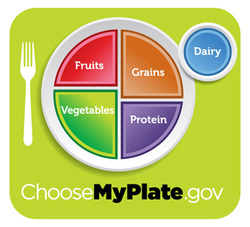Role of the Public Health Nurse
Current Political Issue: Obesity

The International Council of Nurses advocates that “nurses and national nursing associations should play a strategic role in helping reduce environmental and lifestyle-related health hazards by promoting a positive lifestyle, including exercise, stress management, accident prevention, weight maintenance, and nutrition education that is sensitive to socio-economic status and cultural beliefs” (Tao & Glazer, 2005, para. 9).
Obesity in America is a health issue of great importance to community and public health nurses. Obesity negatively impacts quality of life, contributes to reduced productivity and higher rates of chronic disease, and increases the cost of government insurance including Medicare and Medicaid. Obesity affects individuals of all ages and is becoming alarmingly prevalent in the childhood population;overweight children are likely to become overweight or obese adult. “Among children and adolescents, overweight prevalence has tripled from 5% to 15% between the 1970’s and the millennium” (Tao & Glazer, 2005, para. 1). Due to these alarming numbers action is needed now more than ever. Nurses can specifically target children and adolescents to educate and encourage increased levels of physical activity for both males and females (Liou, Liou, & Chang, 2010, p. 1254). This would help to develop healthy habits at a young age and decrease the prevalence of obesity among young children. According to the American Journal of Public Health, “Obesity interventions and prevention have, consequently, become a major priority for policy-makers, health care professionals, economists, and the general public (Craig, Felix, Walker, & Phillips, 2010, p. 2047). If healthcare professionals and other stakeholders do not make this health issue a priority in target communities, the problem will continue to worsen.
How can nurses help? Nurses impact political issues by becoming involved in policy development. Bobby Lowery states that, “nurses are well suited as active participants in the policy process as it closely parallels the nursing process” (Lowery, 2009, p. 135). The nursing process in the community setting consists of a thorough assessment of the determinants of health such as the environmental, socioeconomic, and behavioral factors in order to determine how they contribute to the problem of obesity. Through good assessments nurses can become aware of the health and nutritional status of the population. From there the nurse can gain partnerships within the community to help create and support a plan to tackle this growing epidemic.
Obesity in America is a health issue of great importance to community and public health nurses. Obesity negatively impacts quality of life, contributes to reduced productivity and higher rates of chronic disease, and increases the cost of government insurance including Medicare and Medicaid. Obesity affects individuals of all ages and is becoming alarmingly prevalent in the childhood population;overweight children are likely to become overweight or obese adult. “Among children and adolescents, overweight prevalence has tripled from 5% to 15% between the 1970’s and the millennium” (Tao & Glazer, 2005, para. 1). Due to these alarming numbers action is needed now more than ever. Nurses can specifically target children and adolescents to educate and encourage increased levels of physical activity for both males and females (Liou, Liou, & Chang, 2010, p. 1254). This would help to develop healthy habits at a young age and decrease the prevalence of obesity among young children. According to the American Journal of Public Health, “Obesity interventions and prevention have, consequently, become a major priority for policy-makers, health care professionals, economists, and the general public (Craig, Felix, Walker, & Phillips, 2010, p. 2047). If healthcare professionals and other stakeholders do not make this health issue a priority in target communities, the problem will continue to worsen.
How can nurses help? Nurses impact political issues by becoming involved in policy development. Bobby Lowery states that, “nurses are well suited as active participants in the policy process as it closely parallels the nursing process” (Lowery, 2009, p. 135). The nursing process in the community setting consists of a thorough assessment of the determinants of health such as the environmental, socioeconomic, and behavioral factors in order to determine how they contribute to the problem of obesity. Through good assessments nurses can become aware of the health and nutritional status of the population. From there the nurse can gain partnerships within the community to help create and support a plan to tackle this growing epidemic.
Nurse's Role in Policy Development
Community Health Nursing Roles and Activities in Policy Development:
http://bit.ly/mkI2B1
Stages, Activities, and Outcomes of the Stage-Sequential Model of Policy Development:
http://bit.ly/mFvayg
http://bit.ly/mkI2B1
Stages, Activities, and Outcomes of the Stage-Sequential Model of Policy Development:
http://bit.ly/mFvayg
Choose My Plate

The United States Department of Agriculture (2011) released a new diagram to replace the old Food Guide Pyramid and the MyPyramid guidelines for healthy eating. My Plate demonstrated the new easy to use guidelines using a plate setting to describe how a healthy meal should look. My Plate is visually stimulating to encourage a variety of colors in food selection. No longer are there guidelines determining the serving size of each food group or how to measure a serving. It is simpler than that. The serving sizes are depicted with the pie slices: half of the plate should be fruits and vegetables and the other half consists of grains and protein. The slogans under the diagram are kept simple. My Plate is more user friendly for all age groups.
For more information on this topic visit: http://www.choosemyplate.gov/
Additional Resources:
Listen to CDC Podcasts:
What can be done about the Obesity Epidemic
http://www2c.cdc.gov/podcasts/downloader/download.mp3?af=a&f=2369715
Thoughts on Healthy Food by Michael Pollan
http://www2c.cdc.gov/podcasts/downloader/download.mp3?af=a&f=1262141
http://www2c.cdc.gov/podcasts/downloader/download.mp3?af=a&f=1262142
Finding a Balance Between Diet and Exercise
http://www2c.cdc.gov/podcasts/downloader/download.mp3?af=a&f=13303
Obesity and Women
http://www2c.cdc.gov/podcasts/downloader/download.mp3?af=a&f=11505
What can be done about the Obesity Epidemic
http://www2c.cdc.gov/podcasts/downloader/download.mp3?af=a&f=2369715
Thoughts on Healthy Food by Michael Pollan
http://www2c.cdc.gov/podcasts/downloader/download.mp3?af=a&f=1262141
http://www2c.cdc.gov/podcasts/downloader/download.mp3?af=a&f=1262142
Finding a Balance Between Diet and Exercise
http://www2c.cdc.gov/podcasts/downloader/download.mp3?af=a&f=13303
Obesity and Women
http://www2c.cdc.gov/podcasts/downloader/download.mp3?af=a&f=11505
Tune into ABC Friday's 9/8c to watch Jamie Oliver's Food Revolution as he tries improve American's diet.
